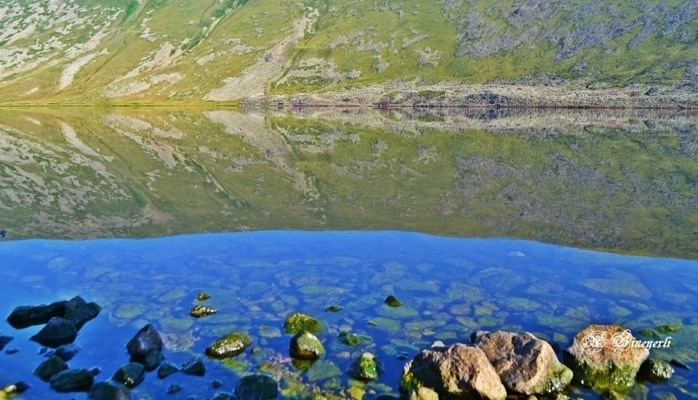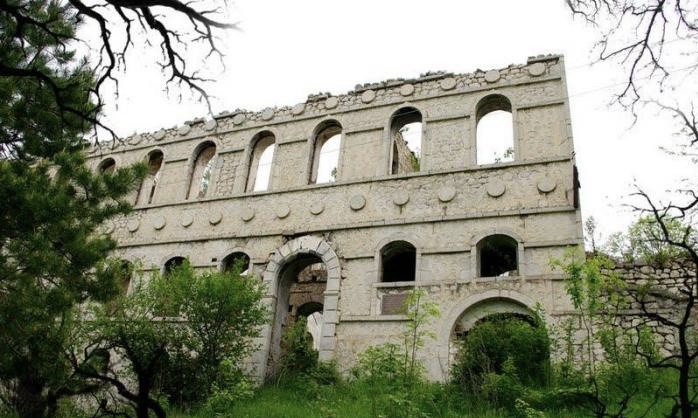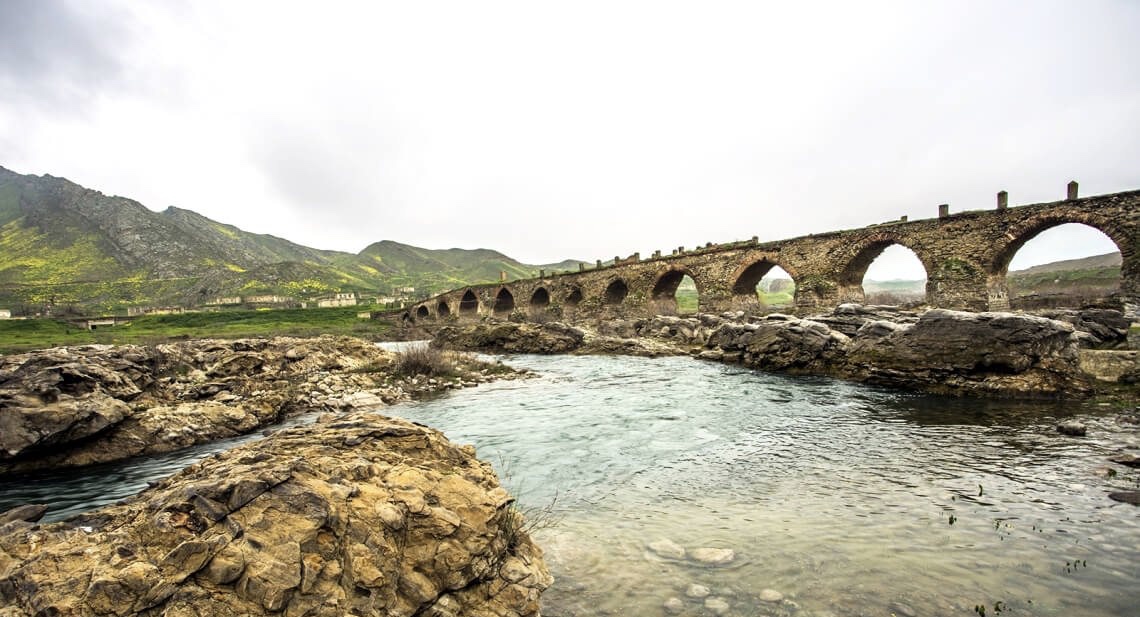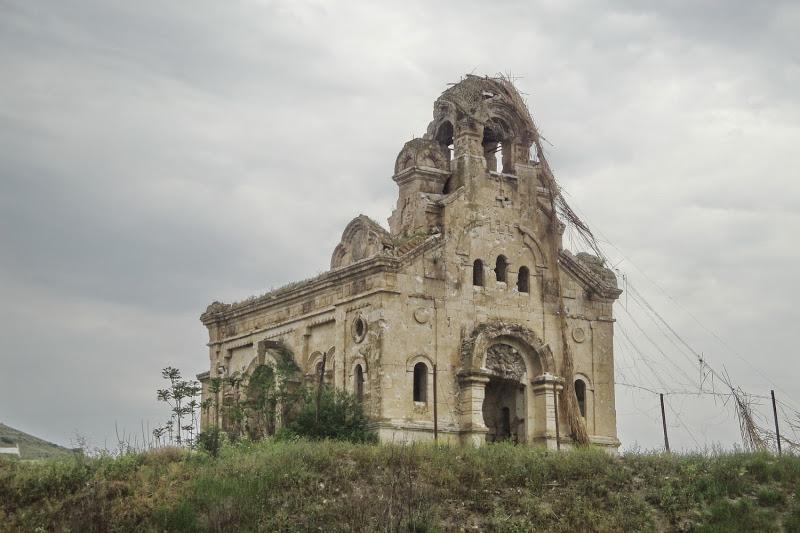






of







of







of





















Aghdam was one of the largest and most beautiful districts of Azerbaijan and the city of Aghdam one of the country’s most distinctive and picturesque. Aghdam became a town as early as 1747, located in the center of Karabakh on the northeastern slopes of the Karabakh mountain range, to the west of the Kur-Aras lowland. According to academics, the name “Aghdam” means “small castle” in ancient Turkish. They say that Turkish-speaking tribes that lived in this region built small castles to protect themselves in ancient times and that one of these castles grew bigger and bigger and eventually became Aghdam.
The administrative district of Aghdam was originally formed on August 8, 1930, following the occupation of Azerbaijan by Soviet Russia. It is located on the northern-eastern slopes of the Karabakh Chain of Mountains, in the south-western part of the Kura-Araxes Lowland that bordered with Aghjabedi, Tartar, Barda, Kalbajar, Askeran, Khojavend, and Fuzuli districts. With a territory of 1,154 square kilometers and a population of 188,400, the district developed very quickly in the ten years before occupation from 1970-1980, the villages and central city becoming larger and more beautiful day by day. The white stone quarry nearby enabled quick construction of white houses built in various architectural styles, adding an extraordinary beauty to the city. It consisted of 1 city, 2 settlements (Guzanli and Acharli), and 123 villages. The central town is the city of Aghdam.
The villages are: Eyvazlı, Baghbanlar, Ismayilbeyli, Mughanli, Pirzadli, Saybali, Bash Guneypeye, Boyahmedli, Gizil Kengerli, Mollalar, Salahli Kengerli, Sofulu, Chemenli, Saridgali, Shukuraghali, Efetli, Hajimemmedli, Hajiturali, Hesenkhanli, Isalar, Kudurlu, Gehremanbeyli, Mammadbaghirli, Ahmedaghali, Chirakhli, Kolgishlag, Mireshelli, Alimedetli, Jinli, Aliaghali, Khachinderbetli, Kurdler, Galaychilar, Mollalar, Goytepe, Abdinli, Javahirli, Kosalar, Gulabli, Abdal, Ahmadavar, Khindiristan, Baharli, Beybabalar, Birinji Yuzbashili, Dadashli, Ikinji Yuzbashili, Kelbehuseynli, Pashabeyli, Sarichoban, Imamgulubeyli, Chullu, Kengerli, Garagashli, Shirvanli, Garadaghli, Evoghlu, Rzalar, Gasimli, Gurdlar, Poladli, Shelli, Bash Gervend, Ayag Gervend, Gazanchi, Shikhlar, Giyasli, Etyeməzli, Keshtazli, Magsudlu, Chullu, Eyvazkhanbeyli, Shahbulag, Salahsəmədlər, Shishpapaglar, Talishlar, Tepemehle, Ternoyut, Tukezbanli, Melikli, Orta Gervend, Gulluja, Ilkhichilar, Suma, Taghibeyli, Khatinbeyli, Khidirli, Chukhurmehle, Merzili, Nemirli, Shotlanli, Shuraabad, Tezekend, Umudlu, Novruzlu, Orta Guneypeye, Papravend, Ballar, Sarijali, Garazeynalli, Gullar, Seyidli, Bozpapaglar, Sarihajili, Sirkhavend, Ballıgaya, Beshirler, Garashlar, Shihbabali, Mughanli, Uchoghlan, Alibeyli, Baharli, Garapirimli, Boyukbeyli, Kichikli, Orta Gishlag, Yeni Garalar, Mahrizli, Yusifjanli, Zəngishali, Yusifli.
Aghdam was a district with heavy, food and light industry and agriculture was developed there. Before the occupation machine tools equipment, aerospace and communication devices, machine factory, tractor, and car repair, asphalt plants, cannery, butter, and cheese dairy factory, silk-worm breeding, carpet, cotton, wine-making, grain products, construction materials, and animal produce factories, mechanized bake-houses, two railway stations and airport, power plants, motor vehicles maintenance stations, customer service center, the electric power station, agriculture, agricultural mechanization and electrification stations, Musical College named after Uzeyir bey Hajibeyov, Aghdam State Drama Theatre named after Abdurrahim bey Hagverdiyev functioned in the city. Also, 38 collective farms and state farms, 24 constructions –installation and 12 industrial enterprises, 74 schools, 105 health centers, 271 cultural centers, 67 offices, 99 clubs are under occupation.
Aghdam was rich in ancient historical monuments too. Archaeological research conducted in the territory in the 1950s proved the existence of ancient human settlements in Aghdam. Archaeological excavations by the well-known archaeologist Ideal Narimanov, at Uchoglantepe showed that the ancient people who lived there six to eight thousand years ago during the Copper Age were familiar with agriculture and animal husbandry.
There were hundreds of historical, architectural, and artistic monuments in the district of Aghdam, too many to name them all but they include the Uzerlik Tepe Monument in the city of Aghdam, the Gutlu Sari Musa oglu Mausoleum in Xachinderbend village (dating from 1314), the tomb and stone monuments in Kangarli village (14th century), the tombs, mosque (18th century) and the Xanoglu tomb (17th century) in Papravend village, Panahali khan’s “Imaret” in the city of Aghdam (18th century), the tombs of celebrated poet Natavan and her son (19th century), the castle of Shahbulag and many more.
Aghdam was famous for its Bread Museum, built in Soviet times, as well as a popular teahouse, built by the celebrated scientist Khudu Mammadov. The Bread Museum functioned from 1983 until 1993 and housed many unique exhibits from the ancient and medieval periods. Among them were fossilized samples of ancient wheat cereal, many valuable books, and manuscripts on agriculture, ancient agricultural tools (ploughs, ordinary and toothed sickles, hand-powered mills), etc. Among the most valuable exhibits were samples of bread brought from Leningrad and Stalingrad under siege during World War II.
Aghdam is also famous for breeding the world-renowned Karabakh horse. The horse-breeding stud began functioning in 1949, developed in the 1960s with the growth of agriculture and interest in horseracing, and grew more rapidly still from the 1970s until the Karabakh War. Karabakh horses were paraded in Soviet exhibitions and competitions and in 1956 the Soviet government gifted Queen Elizabeth II of Britain a Karabakh horse called Zaman bred at the farm in Aghdam.
As a district outside of the Nagorno-Karabakh Autonomous Oblast Aghdam was one of the first districts of Azerbaijan that mostly affected from the very first day of the conflict. In the last months of 1988 ten thousand Azerbaijanis living in Armenia were driven out of their native lands and they took refuge just in the Aghdam district. Not being satisfied with the occupation of the entire Nagorno-Karabakh (1992), Armenia continued its aggressive policy in the districts around Nagorno-Karabakh.
With the help and direct participation of some foreign countries, Armenians selected Aghdam as a target district after the occupation of Shusha, Lachin, and Kalbajar. The Armenians began a large-scale aggression operation to occupy this district. The aggression that started on June 11, ended on July 23, 1993, with the capture of Aghdam after heavy fighting. After five years of struggle, Aghdam was occupied.
As a result of the military aggression continued until May 12, 1994, the Armenians managed to occupy 8467 sq. km of the territory of the Aghdam district, i.e 77.4 percent of the total area. The occupied Aghdam city and 89 villages were destroyed on unprecedented brutality and razed to the ground. Over 5 years of bloody battles for the defense of Aghdam 5897 people were killed, 3531 became invalids, and 1871 children were orphaned. Thousands of people have become physically disabled, more than 126 thousand (1993) citizens of Aghdam have been displaced from their native land. On 29 July 1993, the UN Security Council adopted resolution 853, based on a report by Mario Rafaelli, the former chairperson of the OSCE Minsk Group. It condemned the occupation of Aghdam, called for the immediate, complete, and unconditional withdrawal of occupying forces from the area and for the return of refugees to their homes.
Most of these monuments left on the occupied territory have been completely or partly destroyed. Museums have been looted, monuments and artifacts stolen and transported to Armenia and elsewhere. Victims include the Museum of Bread, the Museum of History and Geography, the museum to famed tar player Gurban Pirimov, and the Art Gallery. The Juma Mosque, an ancient architectural and religious monument in the center of the city of Aghdam – the only mosque in this district – also suffered savage attacks; the minaret has been badly damaged, the ceiling destroyed and the wall inscriptions completely erased. The Armenians use this mosque as a stable.
Due to Armenian vandalism in 2008, Lonely Planet magazine labeled Aghdam the “Hiroshima of the Caucasus” and Aghdam was added to the list of “Ghost Cities” by the online version of Al Jazeera in 2010.
As the result of the trilateral peace agreement between Russia, Azerbaijan, and Armenia that was signed on November 10, 2020, for ending the Second Nagorno-Karabakh War, the Aghdam district was liberated from the Armenian occupation on November 20, 2020.
“Agdam District”, Karabakh.org. https://karabakh.org/conflict/occupied-districts/aghdam-district/.

Qaragol Interrepublics State Reserve was set up with the decision of the Council of Ministers dated November17, 1987. Garagol State …

The idea of establishing Aghdam Bread Museum, which is considered to be the second in the world after the Zurich …

The Khurshudbanu Natavan’s House is a historical and architectural monument of the 18th century located in the city of Shusha. …

Museum Mausoleum Complex of Molla Panah Vagif is located in Shusha, Azerbaijan. It was built in honor of Molla Panah …

The Bridge belongs to the Arran architecture school. The first written source that mentioned the 15-arched Khudafarin Bridge belongs to …

Garghabazar Caravanserai was built in 1681 at the hillside, in the center of Garghabazar village of Fuzuli district, 8 km …

Armenia’s vandalism in Nagorno-Karabakh and seven surrounding regions affected not only the historical, cultural, and religious heritage of Islam but …

Jabrayil History-Ethnography Museum has been operating since 1953. Archaeological and ethnographic materials belonging to the history of the region, textiles, …

Khudavang, or Dedeveng, Monastery Complex is located in the Vang village of Kalbajar District, on the left bank of Tartar …

“The 19th century Aghdam Juma Mosque is perhaps the only structure that has withstood the years of neglect since the …